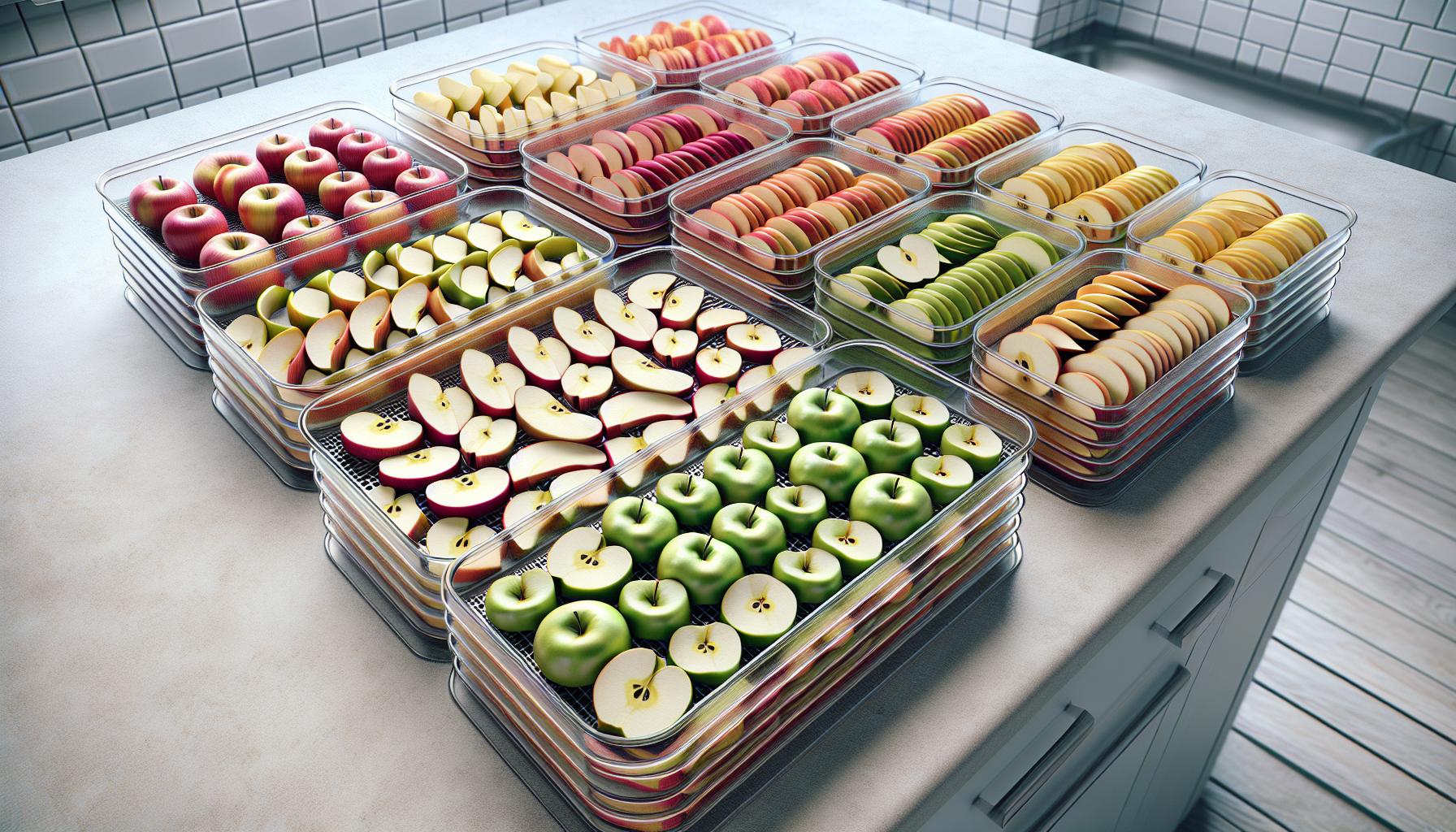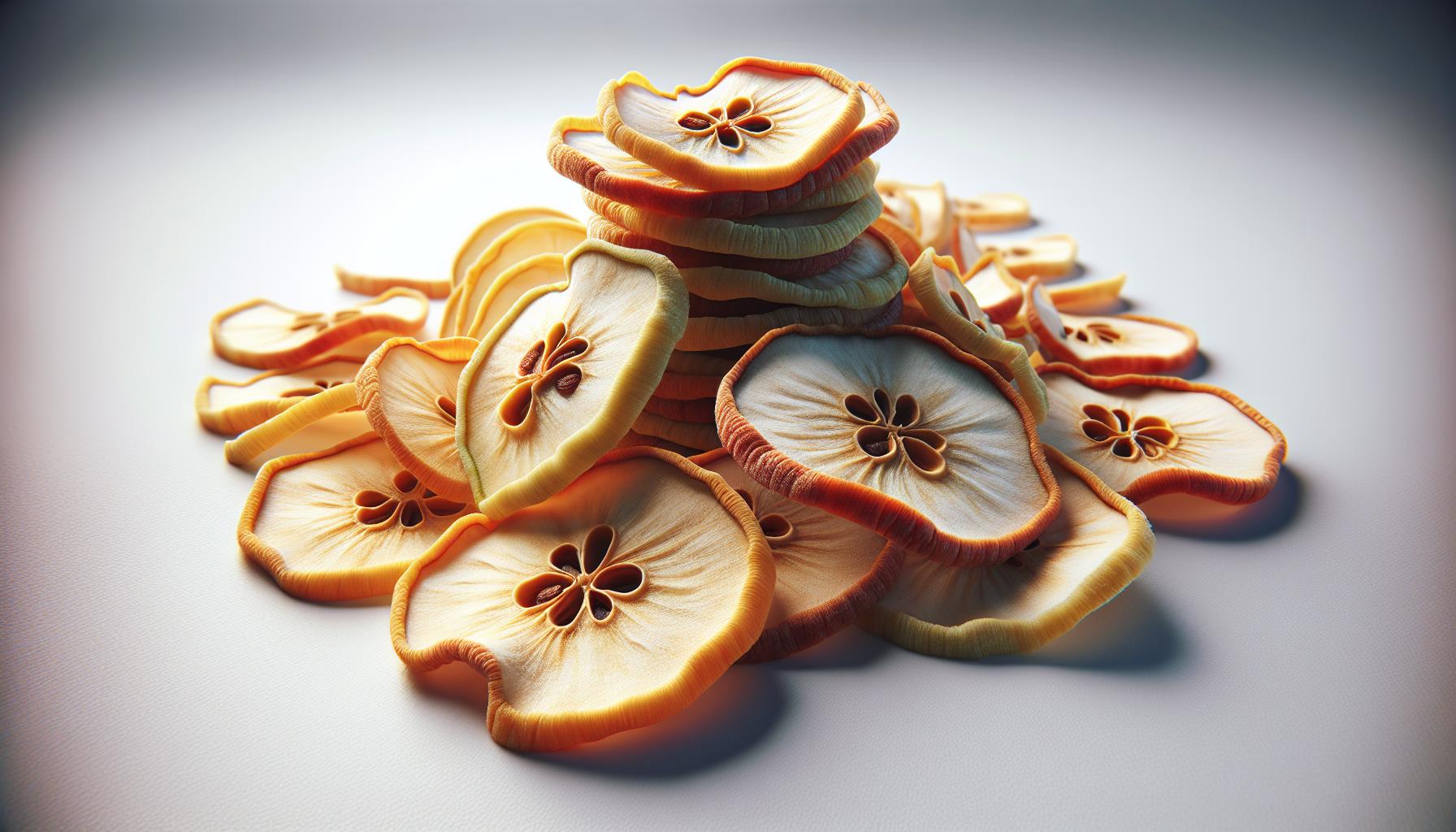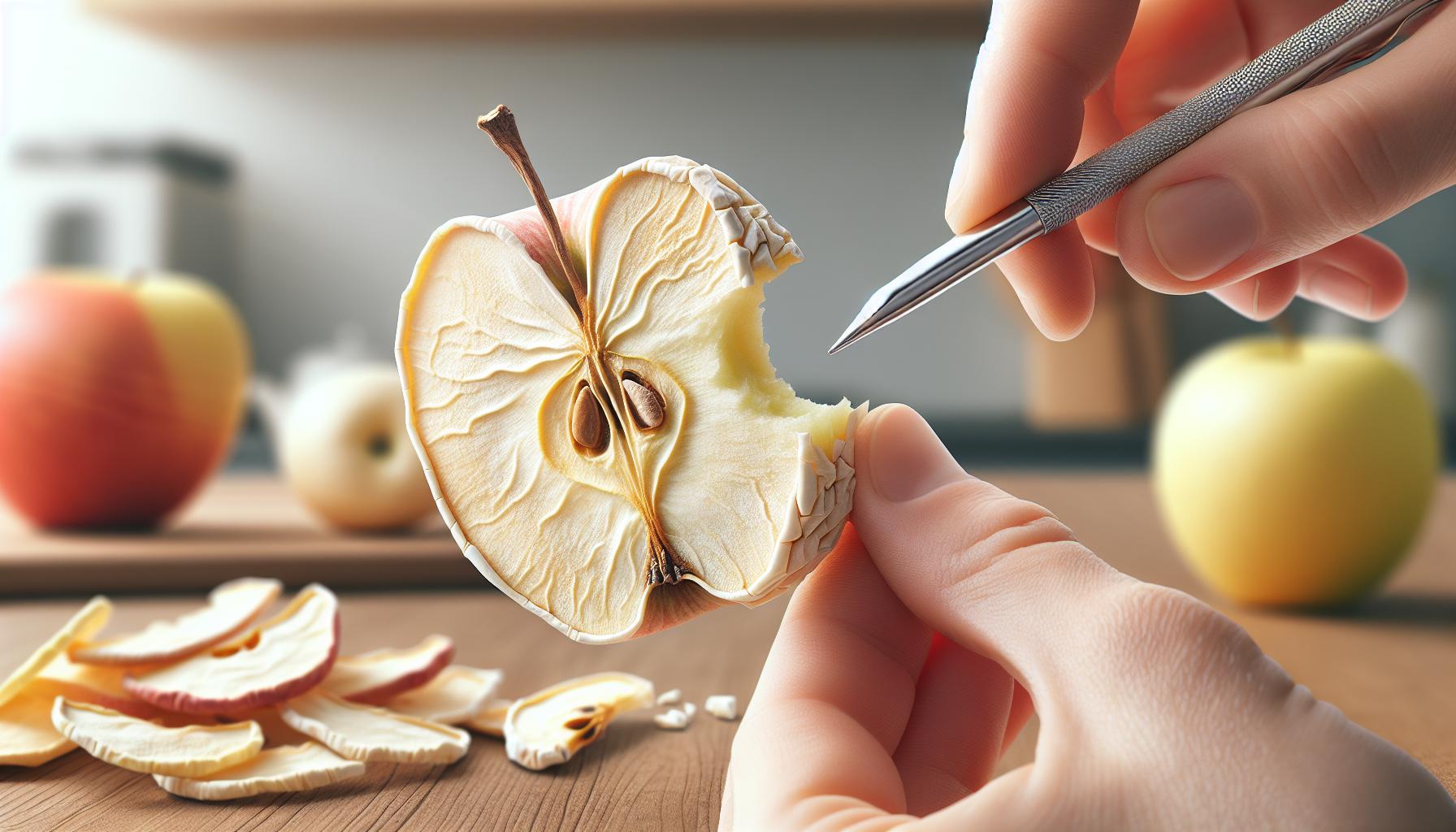Freeze-drying apples has become increasingly popular among food preservation enthusiasts and health-conscious individuals seeking to maintain the fruit’s nutritional value and natural sweetness. This modern preservation method removes moisture while maintaining the apple’s original shape, color and most of its nutritional benefits.
The complete freeze-drying process for apples typically takes between 20 and 40 hours depending on factors like slice thickness apple variety and the specific freeze-dryer model being used. Thinner apple slices around 1/4 inch thick will dry faster while thicker cuts may require additional time.
The journey from fresh apple slices to crispy freeze-dried snacks involves multiple stages including pre-freezing flash-freezing and the gradual removal of ice through sublimation. Understanding these steps and timing factors helps ensure optimal results whether you’re using a home freeze-dryer or working with a commercial unit.
“1. Slice apples evenly
Consistent apple slice thickness creates optimal freeze-drying results. The ideal thickness for apple slices is ⅛ inch (3.2mm), measured uniformly across each piece. A mandolin slicer produces exact measurements for uniform drying times.
Three key factors affect slice consistency:
- Use a sharp blade to prevent tearing
- Remove the core completely before slicing
- Cut perpendicular to the stem end
| Slice Thickness | Freeze Drying Time |
|---|---|
| ⅛ inch (3.2mm) | 10 hours |
| ¼ inch (6.4mm) | 12 hours |
Uneven slices create moisture retention problems:
- Thick sections retain excess moisture
- Thin edges become brittle
- Mixed thicknesses produce inconsistent textures
Premium freeze dryers like Harvest Right process ⅛-inch apple rings in 10.5 hours. Thicker slices extend the drying time by 2 hours or more, reducing overall efficiency. Even slicing maximizes machine capacity while ensuring consistent quality across batches.
2. Arrange on freeze dryer trays

The optimal arrangement of apple slices on freeze dryer trays maximizes efficiency during the 10-12 hour drying process. Place the ⅛-inch apple slices in a single layer with small gaps between each piece. Proper spacing allows cold air circulation essential for uniform freeze-drying.
Here’s how to arrange apple slices effectively:
- Leave edges clear: Position slices ½ inch from tray edges
- Space between pieces: Maintain ¼ inch gaps between apple rings
- Even distribution: Spread slices uniformly across the tray surface
- No overlapping: Stack-free placement prevents moisture traps
- Layer consistency: Use single layers only, never stack pieces
| Tray Size | Apple Slice Capacity | Processing Time |
|---|---|---|
| Standard | 30-35 rings | 10.5 hours |
| Medium | 40-45 rings | 11 hours |
| Large | 50-55 rings | 12 hours |
Loading more slices than recommended extends drying time beyond the standard 10.5 hours. Overloading trays creates moisture pockets that compromise the freeze-drying process quality.
3. Run cycle 20-30 hours

A complete freeze-drying cycle for apples operates through multiple phases spanning 20-30 hours. The initial freezing phase lasts 9-10 hours at temperatures below -40°F (-40°C) while the primary drying phase removes 95% of moisture through sublimation over 8-12 hours. The final secondary drying phase eliminates remaining bound moisture across 3-8 hours.
| Freeze Drying Phase | Duration | Temperature |
|---|---|---|
| Initial Freezing | 9-10 hours | Below -40°F |
| Primary Drying | 8-12 hours | Varies |
| Secondary Drying | 3-8 hours | Room temp |
Key processing factors affect total cycle duration:
- Thicker apple slices take longer than standard ⅛-inch cuts
- Higher initial moisture content extends drying time
- Premium freeze dryers like Harvest Right complete cycles faster
- Pre-frozen apples reduce total processing by 2-3 hours
The cycle monitors internal temperatures through probes ensuring complete moisture removal. A finished batch produces crispy apple pieces that snap cleanly when broken.
4. Test for complete dryness

Testing apple slices for complete dryness requires two simple verification methods: the snap test and the temperature check. The snap test involves taking a freeze-dried apple slice and breaking it in half – a properly dried slice snaps cleanly with a crisp sound.
The temperature probe method measures the internal temperature of the apple slices during the final phase of drying. When the temperature reaches -40°F (-40°C), it indicates moisture removal is complete. Here’s a quick reference guide for testing:
Visual Indicators:
- Pale, matte appearance
- No visible moisture or ice crystals
- Uniform color throughout
- Lightweight and airy texture
- Breaks with a clean snap
- No cold spots when touched
- Crumbles easily without any soft areas
- Zero flexibility when bent
A final temperature reading above -40°F (-40°C) signals incomplete drying, requiring additional processing time. Multiple testing points across different slices ensure uniform dryness throughout the batch. Temperature probes placed in the thickest slices provide the most accurate readings for determining complete moisture removal.
5. Package immediately”
Proper packaging of freeze-dried apples protects them from moisture absorption. Airtight containers or mylar bags with oxygen absorbers create an optimal storage environment. Place the completely dried apple slices into storage containers within 30 minutes after removing them from the freeze dryer.
Storage options for freeze-dried apples:
- Vacuum-sealed mylar bags with 300cc oxygen absorbers
- Mason jars with airtight lids
- Food-grade plastic containers with secure seals
- Double-sealed vacuum bags
Follow these packaging steps:
- Cool apple slices to room temperature (5 minutes)
- Transfer to storage containers using clean, dry hands
- Add oxygen absorbers if using mylar bags
- Seal containers immediately
- Label with date processed
The packaged freeze-dried apples maintain quality for up to 25 years when stored properly in airtight containers away from direct sunlight at room temperature. Breaking the seal exposes the apples to moisture, reducing shelf life to 6-12 months depending on storage conditions.



